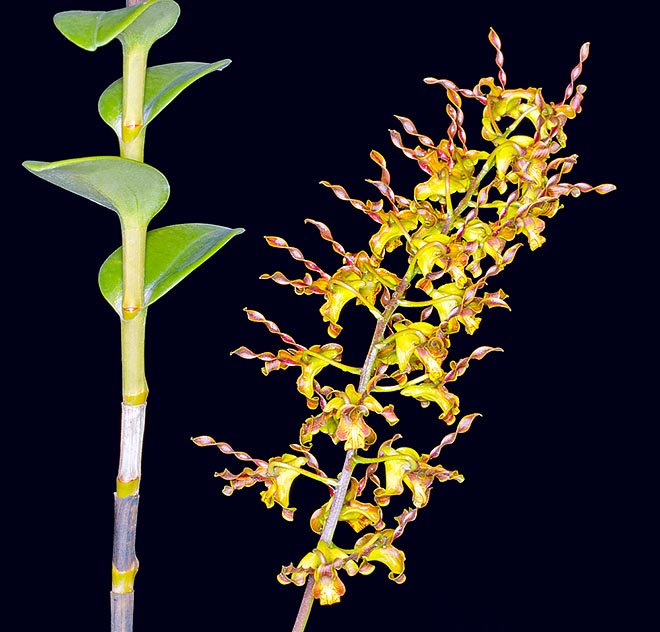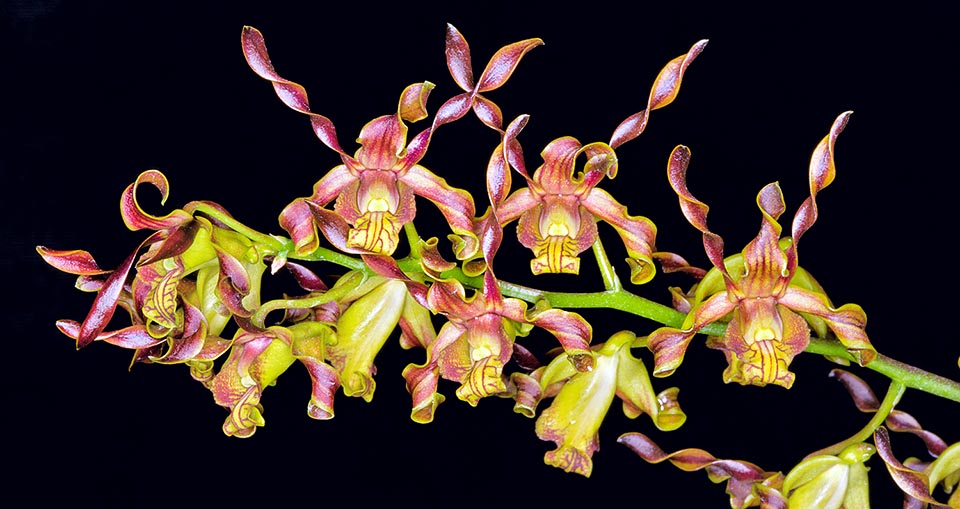Family : Orchidaceae

Text © Pietro Puccio

English translation by Mario Beltramini

Dendrobium cochliodes is a New Guinea epiphyte with even 1 m long cylindrical pseudobulbs © Giuseppe Mazza
The name of the genus is the combination of the Greek substantives “δένδρον” (dendron) = tree and “βίος” (bios) = life, with reference to the numerous species of the genus living on the trees; the name of the species is the combination of the Greek substantive “κοχλίας” (cochlias) = snail and of the suffix “-οειδής” (-oeidés), from “εἶδος” (êidos) = shape, look, with reference to the spirally curved petals.
Common names: shell-like dendrobium (English).
The Dendrobium cochliodes Schltr. (1912) is an epiphytic species with cylindrical pseudobulbs that may exceed the length of 1 m provided in the upper half of alternate leaves, distichous, oblong-elliptic, coriaceous, of glossy pale green colour above, opaque below.
Racemose inflorescences from the upper nodes usually erect, 20-40 cm long, bearing 15-30 flowers of 4-5 cm of diameter of suffused or tinged with brown yellow colour.
Linear-lanceolate sepals with pointed apex, curved, about 2,2 cm long and 0,7 cm broad, the lateral two are merged at the base of the column forming a sort of conical spur (mentum), almost erect, linear-spatulate petals with pointed apex, repeatedly twisted, about 3,8 cm long and 0,3-0,4 cm broad, trilobed labellum, 3 cm long and 1,5 cm broad, with erect lateral lobes at the sides of the column and oblong median lobe with retroflexed apex.
The flowers are long-lasting, 4-6 weeks.
It reproduces by seed, in vitro, and division, to be done by the vegetative restart, with each section provided of at least 3-4 pseudobulbs.

The splendid racemose inflorescences may reach even 40 cm, with 30 4-5 cm flowers, with characteristic spirally twisted petals that have named the species © G. Mazza
The species is reported in the appendix II of the CITES (species whose trade is internationally ruled).
Synonyms: Dendrobium ruidilobum J.J.Sm. (1934); Durabaculum cochliodes (Schltr.) M.A.Clem. & D.L.Jones (2002); Durabaculum ruidilobum (J.J.Sm.) M.A.Clem. & D.L.Jones (2002).
→ For general notions about ORCHIDACEAE please click here.
